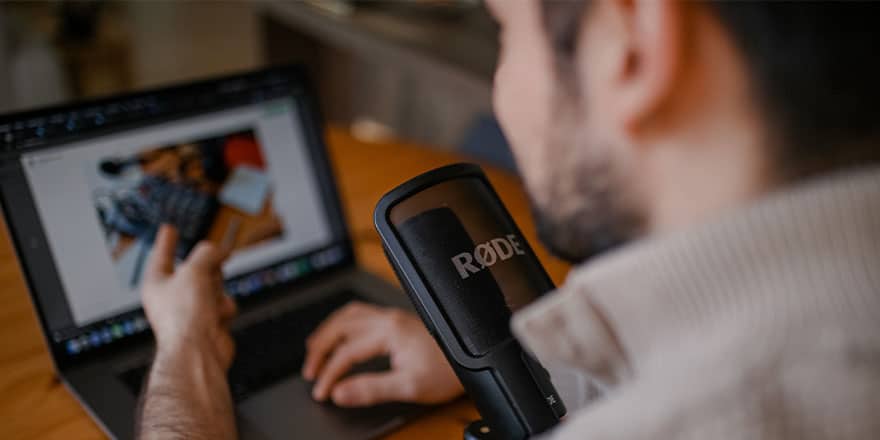
Refersion helps online shops track sales driven by promoters, influencers, and affiliates. We’ve made it easier than ever.
Visit Profile
YouTube influencer marketing is a form of digital marketing in which brands work with content creators on the platform to advertise their products or services. Since its launch in 2005, YouTube has pioneered the video-sharing sphere unlike any other social media channel. It was only until recent years that TikTok became a global phenomenon that posed any form of competition for the platform. Still, YouTube remains one of the most popular and effective platforms for influencer marketing.
2009 marked the beginning of the YouTube influencers’ age. Many popular creators who have already amassed a large audience on their own have started taking sponsorships and opportunities from brands and receiving revenue for their content. Both brands and influencers soon began realizing the immense potential of their collaborations on the platform.
From hauls to unboxing videos, reviews, tutorials, and vlogs, YouTube enables countless ways for brands and creators to work together. So let’s get started and discuss how your brand can benefit from YouTube influencer marketing.
Influencer marketing relies on posting high-quality visuals to showcase a brand or service in the best possible way. Youtube is the video-sharing platform that naturally favors such content. This makes it one of the most beneficial social media channels for your brand’s marketing campaign.
Influencer marketing on YouTube differs from other social media platforms. It focuses on long-form content, allowing creators to share more details about their sponsorships in each video rather than cut it down to a short Instagram Reel or TikTok.
YouTube’s unique format provides another advantage over other social media platforms: it helps influencers form more profound and meaningful relationships with their audience, as they can showcase their lives and interests in great detail.
In fact, 4 in 10 Millennial subscribers claim their favorite creators understand them better than their friends, and 70% of teenage YouTube subscribers relate to their favorite influencers more than traditional celebrities. So clearly, content creators on YouTube have an immense influence on their subscribers, who will often trust their advice when deciding to buy products. This makes them invaluable for brands promoting their products and services in relevant niches.
Moreover, brands looking to use the platform for influencer marketing can also consider utilizing one of its latest features, “Shorts”. These are YouTube’s answer to TikTok’s popular short-form video content. Shorts are uploaded in a vertical format and could be up to 60 seconds long, making them suitable for quick product showcases and much more.

Refersion helps online shops track sales driven by promoters, influencers, and affiliates. We’ve made it easier than ever.
Visit Profile
Harness the power of influencers to achieve your growth goals with Moburst, a leading global performance influencer marketing agency that helps brands over-achieve their goals and become category leaders.
Contact Now
BuzzGuru is an ecosystem for swift and easy influencer marketing. We have a platform for connecting game companies.
Visit ProfileYouTube provides creators and marketers with a wide range of marketing strategies they can utilize. Let’s look at the platform’s most dominant types of influencer marketing content.
Haul videos showcase a recent shopping experience in which creators will show and briefly discuss various products brands have gifted them. These videos create a sense of intimacy within the influencer’s audience as they get a glimpse into their daily lives and activities.
Brands looking to use hauls in their marketing strategy should consider utilizing product seeding. This means sending a selection of your products to relevant influencers within your audience’s niche.
A great example of a brand that capitalizes on the trend is Shein. The famous affordable online clothing brand features the haul videos influencers and customers create on their social media channels. The brand also collaborates with YouTubers of all shapes and sizes who post haul videos on their channels. This helps the company showcase its wide range of products and low prices.
YouTube tutorials are amongst the platform’s most popular videos. This makes them practical for brands promoting a product or service that might need further explanation or demonstration. These types of videos can also be suitable for convincing ambivalent potential customers to make a purchase.
Revlon, a popular cosmetics brand, often collaborates with YouTube influencers to create tutorials that show their newest products, such as their One-Step Hair Dryer. Being a relatively innovative product on the market, many people were initially unsure about how to use it, making these tutorial videos a success for the brand.

Many YouTube influencers are known for their vlog content. These videos typically show the creator’s everyday life: from grabbing a coffee at Starbucks to cleaning out their wardrobe and all the way to sharing their travel diaries. Fans enjoy watching these videos because they can feel like they’re spending the day with these creators.
One example of an influencer known for this type of content is Zoe Sugg, an English YouTuber, entrepreneur, and author. She rose to success by posting many vlogs about her daily activities, such as organizing her baby’s playroom and shopping for Christmas. During these vlogs, she occasionally features brand collaborations or gives her opinions about PR products that have been sent to her. While this vlog example didn’t mention a direct partnership with the brand, she chose to unbox Lush’s PR package in the vlog and include it in the video’s title.
If you’re a brand looking to get in on the trend, consider reaching out to influencers within your niche and asking if they may be interested in featuring your products in their usual vlog content. You can even include an affiliate link and discount code for their audience to use to make the offer more appealing.
YouTube reviews have successfully generated sales for many brands. In these videos, influencers receive brand products or services and provide positive reviews. It’s an effective way to give your audience a look and feel for what you’re trying to sell. Many YouTube channels revolve around this type of content, and the creators behind them are often trusted by their audience – making this strategy great for brands in their niches.
Logitech is one example of a brand that successfully utilizes this type of campaign. The company sends out its newest product releases for creators to review. However, instead of sending the same products to everyone, they carefully choose influencers with different audiences and only send the relevant products to each creator.
In Harris Heller’s case, the influencer behind the YouTube channel, “Senpai Gaming,” the brand chose to send their new Blue Sona microphone for review. The video and product choice were an excellent fit for the creator’s regular content, as the microphone is designed for game streamers, who make up most of his audience.
These types of videos are similar to hauls but differ in that they usually feature a singular product rather than numerous items shown in hauls. Due to this, unboxing video campaigns can be more suitable for tech or high-end brands. These videos also tend to generate a lot of hype and anticipation for new product launches, so timing them accordingly can benefit your brand’s marketing campaign if done correctly.

Unboxing videos should focus on building up credibility for your brand. This can be done by using influencers who have a lot of experience with this type of content and have done them for other brands. For example, many luxury brands, such as Louis Vuitton and Balenciaga, have chosen to work with LValiquette, a YouTube creator whose channel is focused on unboxing and reviewing designer products. Using a similar strategy when choosing which influencers to work with will help build trust with your audience and make them more likely to be interested in purchasing your products.
The last types of influencer content we frequently see on YouTube are giveaways and contests. As the name suggests, these videos give viewers a chance to win goodies by entering a giveaway or contest and following their guidelines.
Not only can these videos incentivize an audience to take a closer look at your product, but they can also boost your social media channels’ metrics. This can be done by asking the viewers to follow or tag your pages to participate. You can host the giveaway or contest on your brand’s YouTube channel or through the influencers’ channels, such as in this example from Skyloafu’s channel.
Pro tip: time your brand’s giveaway campaign at the end of the year or around your audience’s local holidays to maximize exposure and engagement.
Every successful influencer marketing campaign should have the following key components: the right influencers, messages, and tactics. Use these components as a guide when setting up your campaign to get the most out of it. Also, consider your budget and long-term brand development goals to ensure you’re on the right track each step of the way.
Begin by dictating which niches your products and services slot into. Let’s take a vegan skincare brand as an example. Some of this brand’s relevant interest groups could include vegans, vegetarians, and environmentalists. Using these interest groups as our guideline, the next step would be determining the brand’s target audience based on its demographics.

After gaining insight into your audience and where they can be found, it’s time to discover the relevant influencers for your YouTube marketing campaign. A good rule of thumb here is to reach out to influencers with a similar target audience.
Since there are plenty of influencers and social media platforms to consider, the best way to go about this process will be to hire an influencer marketing agency. These agencies have the expertise and knowledge to assist your brand in locating the right influencers, audience, and marketing goals.
The final step of your marketing strategy will be measuring the campaign’s success. Determine your KPIs (Key Performance Indicators) according to what you’re trying to achieve by advertising on the platform: Are you looking to increase views and subscribers for your brand’s channel? Are you trying to gain more brand awareness?
Here are some metrics you can keep track of when estimating your YouTube influencer marketing campaign’s success:

Sign up to our newsletter to receive an in-depth influencer marketing guide and keep up to date with all of the latest influencer marketing news.
"*" indicates required fields